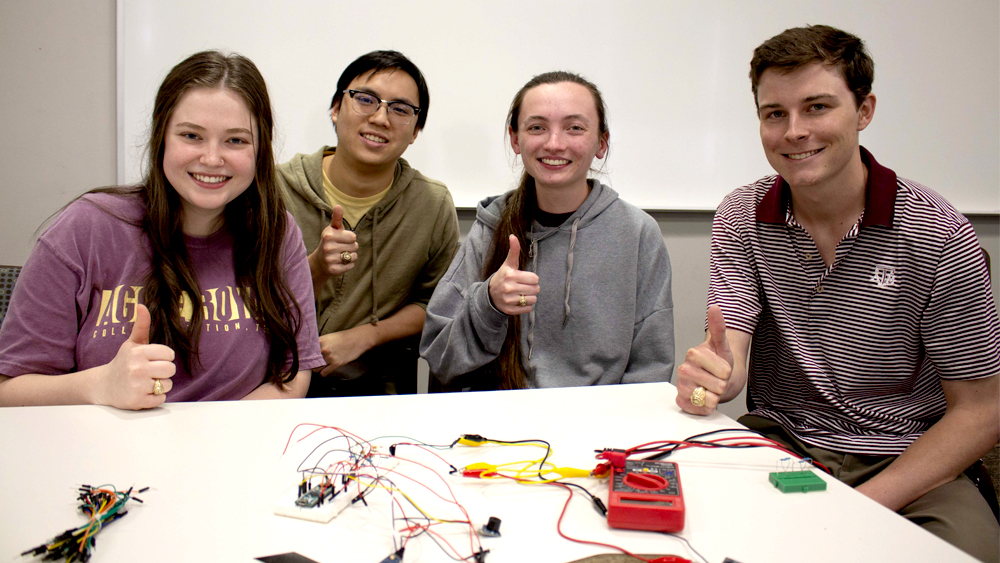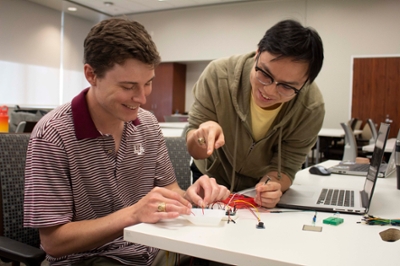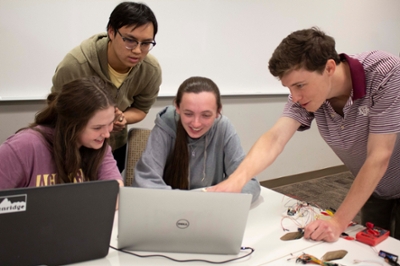
Sponsor: Texas Children’s Hospital
Having an IV put in your arm is not a pleasant experience. If it moves out of the vein for some reason, fluid will leak into the tissue instead of the vein through extravasation, which can be painful. A senior capstone design team worked to develop a system to better detect this extraversion in hospitalized infant patients.
Project need: Extravasation in infants can be difficult to detect quickly.
“Pain is an important symptom, and children can’t always verbalize that,” said Lauren Kwiatkowski.
Current detection systems involve the nurse manually having to check the IV in each patient.

Solution: The team designed an extravasation detection system that senses changes in temperature, swelling and leakage at the insertion site and alerts the attending nurses.
“If it is able to efficiently monitor that IV site, the nurses wouldn’t have to constantly worry about it,” said Daniel Wang. “I feel like they are still going to check during rounds, but this device can act as a backup system for them if something were to happen.”
Challenges: Because the device will mainly be used on babies, developing a tool without choking hazards was a challenge. As the team was told, anything that can fit through a toilet paper tube will cause an issue.

“Making sensors that are small enough but also spread out enough to actually diagnose the symptoms was an issue,” said Nolan Rizzo. “The symptoms may not be just at the insertion site, they could appear somewhere else. We have to design a dressing that’s the proper size to not only fit on a really small baby’s arm, but also big enough to have a range of area to diagnose the symptoms.”
Broader impact for students: Emily Zagrzecki said having the opportunity to gain new skills in prototyping has been a highlight for her.
“My favorite thing to do is hands-on projects, so just getting to build it has been really exciting,” Zagrzecki said. “Every time something works, we get so excited, and it’s cool to see it all get pieced together.”